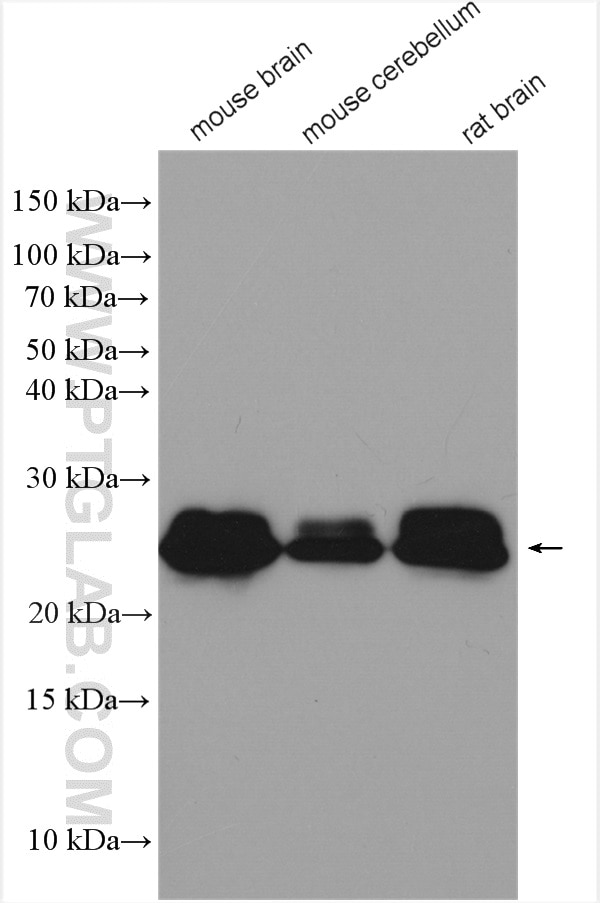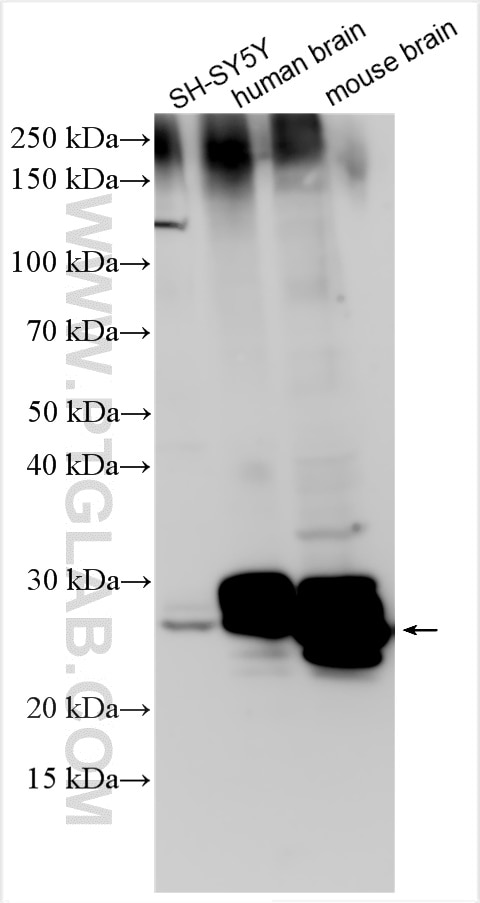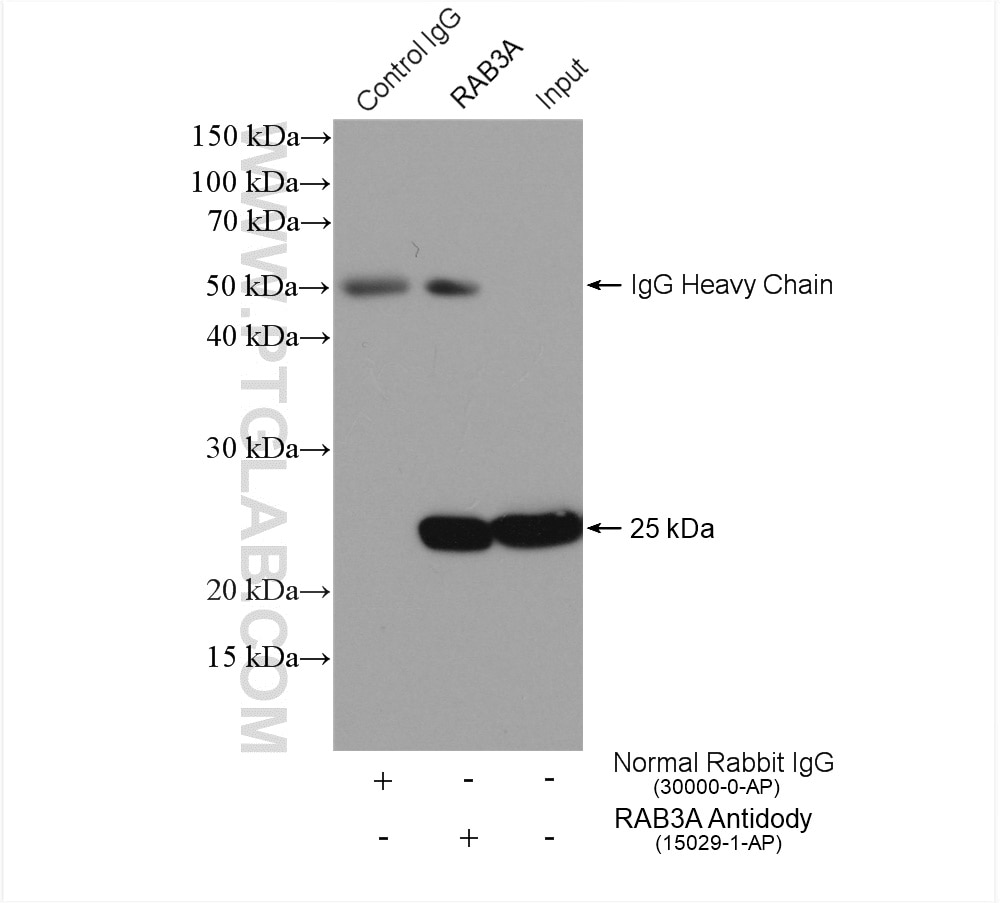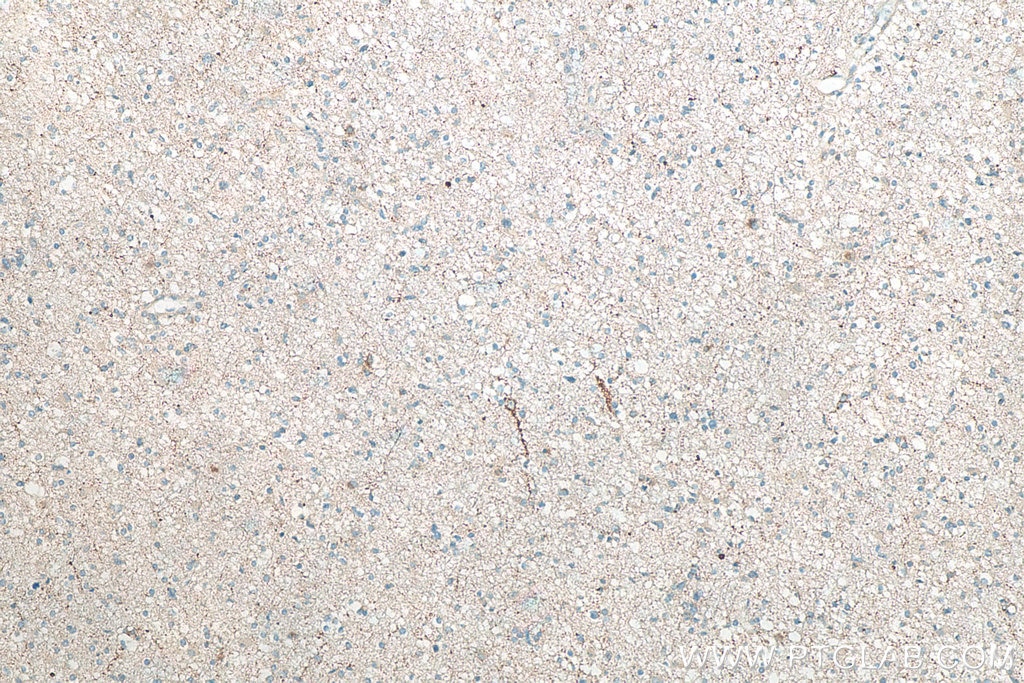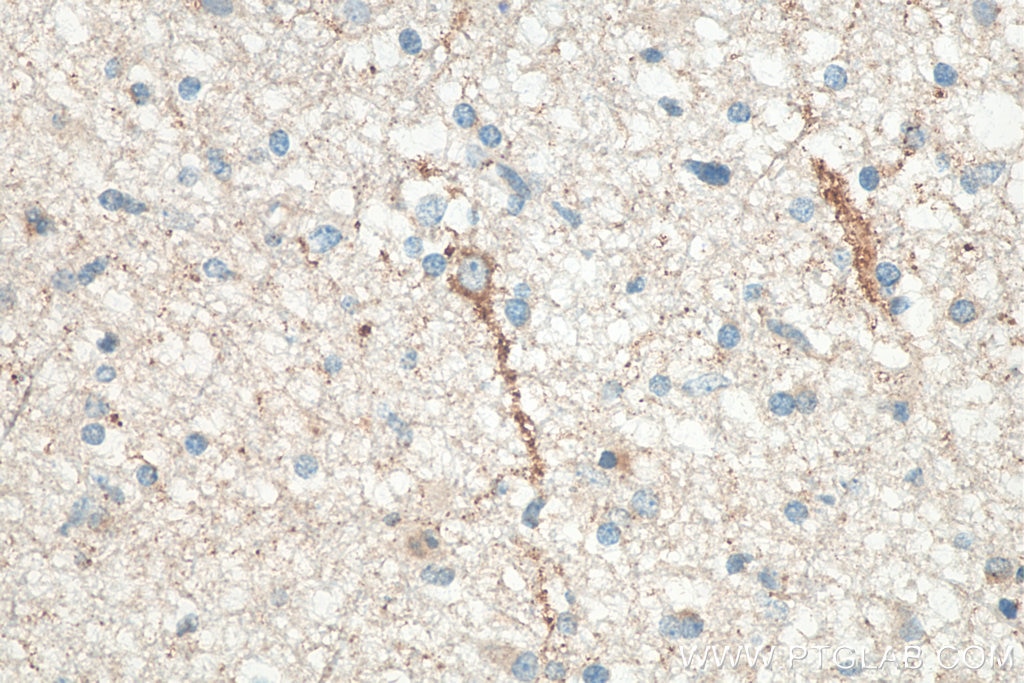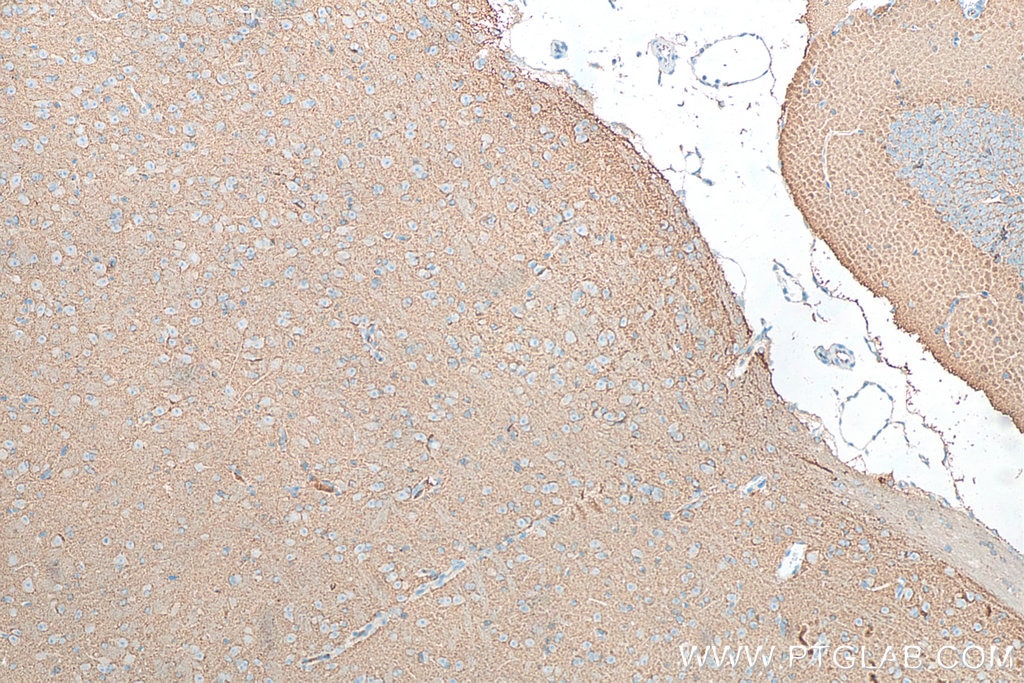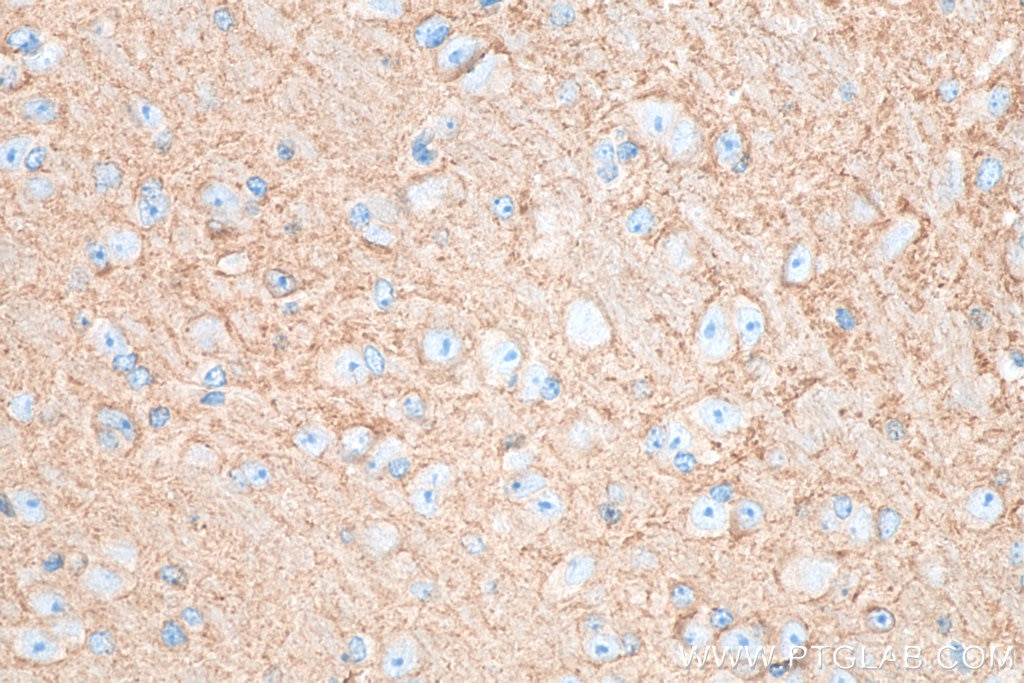Validation Data Gallery
Tested Applications
| Positive WB detected in | mouse brain tissue, SH-SY5Y cells, human brain tissue, mouse cerebellum tissue, rat brain tissue |
| Positive IP detected in | mouse brain tissue |
| Positive IHC detected in | human gliomas tissue, mouse brain tissue Note: suggested antigen retrieval with TE buffer pH 9.0; (*) Alternatively, antigen retrieval may be performed with citrate buffer pH 6.0 |
Recommended dilution
| Application | Dilution |
|---|---|
| Western Blot (WB) | WB : 1:1000-1:6000 |
| Immunoprecipitation (IP) | IP : 0.5-4.0 ug for 1.0-3.0 mg of total protein lysate |
| Immunohistochemistry (IHC) | IHC : 1:50-1:500 |
| It is recommended that this reagent should be titrated in each testing system to obtain optimal results. | |
| Sample-dependent, Check data in validation data gallery. | |
Published Applications
| KD/KO | See 2 publications below |
| WB | See 10 publications below |
| IHC | See 3 publications below |
| IF | See 3 publications below |
| CoIP | See 1 publications below |
Product Information
15029-1-AP targets RAB3A in WB, IHC, IF, IP, CoIP, ELISA applications and shows reactivity with human, mouse, rat samples.
| Tested Reactivity | human, mouse, rat |
| Cited Reactivity | human, mouse, rat |
| Host / Isotype | Rabbit / IgG |
| Class | Polyclonal |
| Type | Antibody |
| Immunogen | RAB3A fusion protein Ag1903 相同性解析による交差性が予測される生物種 |
| Full Name | RAB3A, member RAS oncogene family |
| Calculated molecular weight | 25 kDa |
| Observed molecular weight | 25 kDa |
| GenBank accession number | BC011782 |
| Gene Symbol | RAB3A |
| Gene ID (NCBI) | 5864 |
| RRID | AB_2177378 |
| Conjugate | Unconjugated |
| Form | Liquid |
| Purification Method | Antigen affinity purification |
| UNIPROT ID | P20336 |
| Storage Buffer | PBS with 0.02% sodium azide and 50% glycerol , pH 7.3 |
| Storage Conditions | Store at -20°C. Stable for one year after shipment. Aliquoting is unnecessary for -20oC storage. |
Background Information
Rab3A is a small G-protein of the Rab family, that is implicated in vesicle fusion and regulated secretion, particularly in neurotransmitter release. Rab3 subfamily small G proteins (Rab3A, Rab3B, Rab3C, and Rab3D) control the regulated exocytosis in neuronal/secretory cells. Rab3A is the most abundant Rab GTPase in brain, where it is associated with synaptic vesicles. Rab3A is believed to modulate secretion efficiency by stimulating vesicle recruitment to sites of exocytosis and/ or by recruiting regulatory molecules to the docking/ fusion machinery.
Protocols
| Product Specific Protocols | |
|---|---|
| WB protocol for RAB3A antibody 15029-1-AP | Download protocol |
| IHC protocol for RAB3A antibody 15029-1-AP | Download protocol |
| IP protocol for RAB3A antibody 15029-1-AP | Download protocol |
| Standard Protocols | |
|---|---|
| Click here to view our Standard Protocols |
Publications
| Species | Application | Title |
|---|---|---|
Mol Oncol Overexpression of synaptic vesicle protein Rab GTPase 3C promotes vesicular exocytosis and drug resistance in colorectal cancer cells | ||
Mol Cancer Secretory RAB GTPase 3C modulates IL6-STAT3 pathway to promote colon cancer metastasis and is associated with poor prognosis. | ||
Cell Death Dis O-GlcNAcylation on Rab3A attenuates its effects on mitochondrial oxidative phosphorylation and metastasis in hepatocellular carcinoma.
| ||
FASEB J Role of RanBP9 on amyloidogenic processing of APP and synaptic protein levels in the mouse brain. | ||
PLoS One RanBP9 Overexpression Accelerates Loss of Pre and Postsynaptic Proteins in the APΔE9 Transgenic Mouse Brain. | ||
Biochem Pharmacol Zoledronate modulates intracellular vesicle trafficking in mast cells via disturbing the interaction of myosinVa/Rab3a and sytaxin4/VAMP7. |
